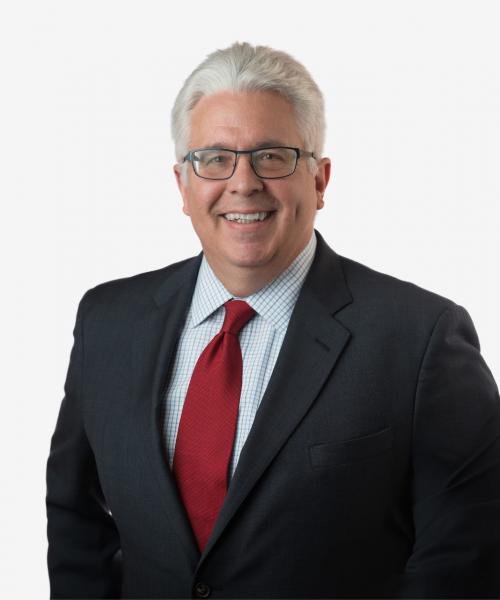Start Sniffling: DOL Issues Final Rule On Paid Sick Leave For Federal Contractor Employees
On September 29, 2016, the US Department of Labor issued its Final Rule implementing President Obama’s Executive Order 13706, requiring federal contractors to offer up to 56 hours or 7 days of paid sick leave per year. The Executive Order, which was issued on September 7, 2015, was previously reported here.
The Executive Order was issued after the Healthy Families Act, which would have required paid sick leave nationwide, stalled repeatedly in Congress. It is expected to impact more than 1.1 million workers once it is fully implemented. More than 20 cities and states recently have passed paid sick leave legislation. Still, it is estimated that approximately 40% of private sector employees are not entitled to paid sick leave. Some commentators are suggesting that the Executive Order and the Final Rule will have a ripple effect, because federal contractors may offer the same paid sick leave to their non-federal contract employees to have consistent policies.
Covered Contracts
The Final Rule applies to contracts solicited by the federal government on or after January 1, 2017 and contracts that are awarded outside of the solicitation process on or after that date. It also applies to contracts entered into prior to January 1, 2017 if, through bilateral negotiation, on or after January 1, 2017, the contract is renewed or is extended or amended under certain circumstances. It does not cover grants, contracts and agreements with Indian Tribes, procurement contracts for construction not covered by the David-Bacon Act, contracts exempt from the Service Contract Act, employees performing in connection with covered contracts for less than 20 percent of their work hours in a given workweek, or employees whose covered work is governed by a collective bargaining agreement that already provides 56 hours of paid sick time.
Paid Sick Leave
The Rule requires that covered employees earn one hour of paid leave for every 30 hours worked, up to a maximum of 56 hours per year. Hours worked has the same meaning as it does under the Fair Labor Standards Act and 29 CFR Part 785. Accrual of paid sick leave must be calculated and reported to employees no frequently than at the conclusion of each pay period or each month, whichever interval is shorter. A contractor may choose to provide an employee with at least 56 hours of paid sick leave at the beginning of each accrual year rather than having the employee accrue leave over time. Paid sick leave must carry over from one accrual year to the next. Such leave that is carried over from the previous accrual year does not count toward any limit the contractor sets on annual accrual. Paid sick leave must be reinstated for employees rehired by the same contractor within 12 months after a job separation. However, accrued but unpaid sick leave does not have to be paid on termination of employment.
Use of Paid Sick Leave
Paid sick leave may be used for (i) a physical or mental illness, injury, or medical condition of an employee; (ii) obtaining diagnosis, care, or preventive care from a health provider of the employee; (iii) caring for the employee’s child, parent, spouse, domestic partner, or any other individual related by blood or affinity whose close association with the employee is the equivalent of a family relationship who has any of the conditions or needs for diagnosis, care, or preventive care described above or is otherwise in need of care; (iv) domestic violence, sexual assault, or stalking if time away from work is due to (i) or (ii) above or to obtain additional counseling, seek relocation, seek assistance from a victim services organization, take related legal action, or assist a related person defined above in doing any of the foregoing. Leave can be accounted for in increments of no greater than one hour.
Requests and Certifications
If the need for leave is foreseeable, the employee must make the request at least 7 calendar days in advance. If that is not possible, the leave must be requested as soon as is practicable. A contractor may require certification from a health care provider only if the employee is absent for 3 or more consecutive full workdays. Existing paid time off policies generally will satisfy the requirements of the Rule if they are at least as favorable to employees as the Rule’s requirements.
Prohibited Acts
The Rule prohibits contractors from interfering with employee rights under the Rule or from discriminating against employees for using or attempting to use paid leave, filing any complaints or cooperating in any investigation regarding compliance with the Rule, or informing any other person of their rights under the Rule. It also prohibits the waiver of any rights under the Rule.
Recordkeeping and Notices
The Rule has detailed recordkeeping requirements for federal contractors and also requires them to post a notice of the Rule’s requirements “in a prominent and accessible place at the work site so it may be readily seen by employees.” Electronic positing is permitted under certain circumstances.
Enforcement
The Rule will be enforced by the DOL’s Wage and Hour Division. Violations can lead to disbarment for up to 3 years. The DOL can file a civil action to recover monetary relief due if the withholding of contract payments is insufficient.
Takeaways
The DOL has a comprehensive web page on all aspects of the Final Rule that can be accessed here. It is likely that with the implementation of this Rule, more states and cities and perhaps even the federal government will pass paid sick leave laws, and they will become the norm rather than the exception.
If you have any questions about the Final Rule or paid sick leave laws in general, please contact the author, any other member of the Labor & Employment Law Group or the Arent Fox professional who regularly handles your matters.
Contacts
- Related Industries
- Related Practices
